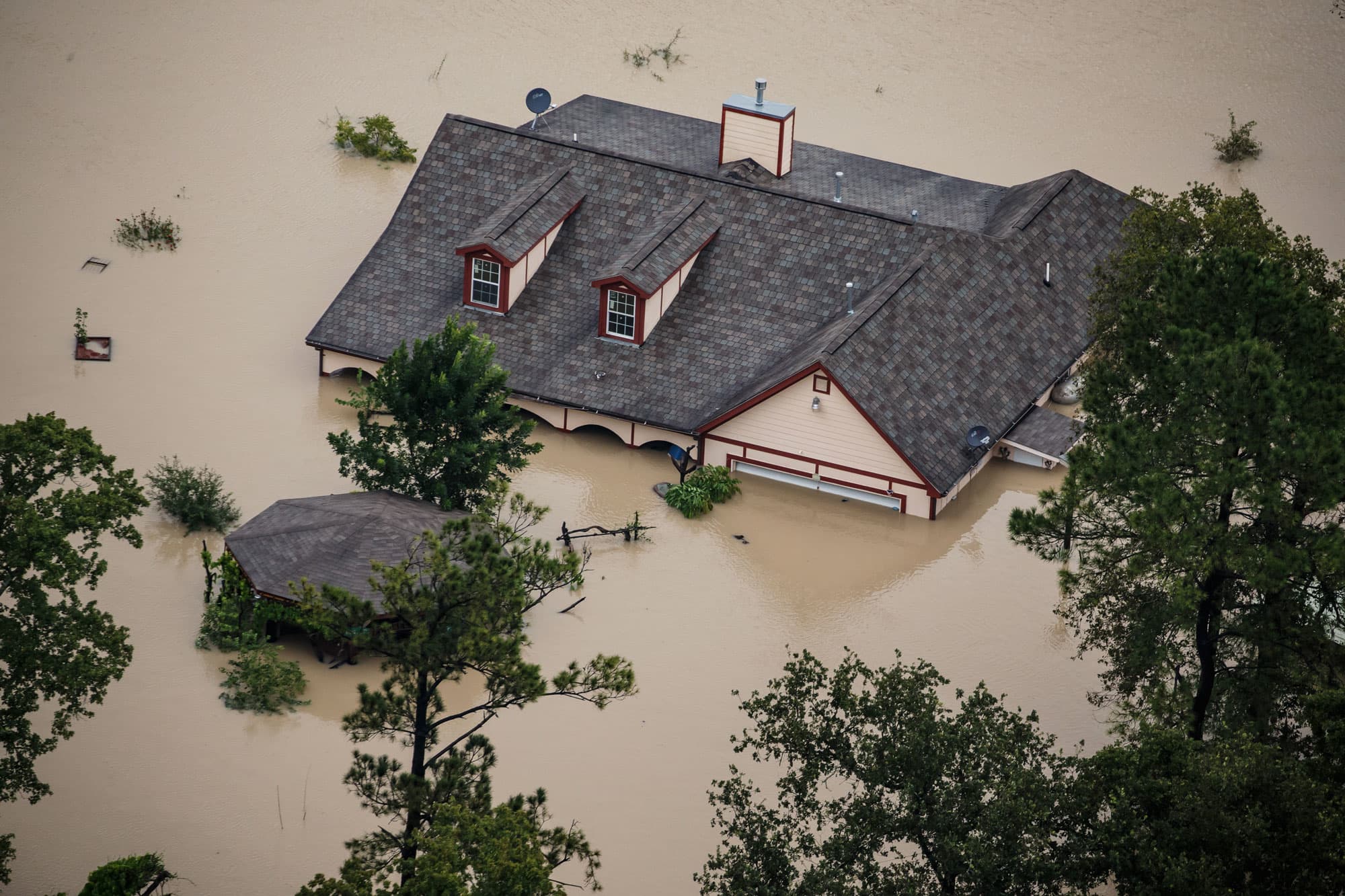
As Hurricane Laura bears down on the Gulf Coast, residents are preparing for what could be a historic storm surge.
The potential for widespread flooding is high, but even after major storms like Hurricane Harvey in 2017, some homeowners in high-risk areas still do not have flood insurance. That's because today's federal flood maps, which guide insurance demand, are backward-looking and don't factor in the effects of climate change.
Starting this week, however, every homeowner and potential homebuyer in America will be able to see a new, forward-looking analysis of their property's flood risk. That could have a huge impact on the national housing market.
A nonprofit research and technology group, First Street Foundation launched an interactive website offering flood risk data on more than 142 million homes and properties across the country in June. Now Realtor.com, one of the nation's largest home listing sites, will put those scores on all of its listings.
First Street, working with more than 80 scientists and researchers, is remapping America's flood risk in an effort to educate homeowners, buyers and the greater real estate industry. It assigns a flood score to every property.
"We're basically building flood models that calculate the past, present and future flood risk for every home in the country," said Matthew Eby, founder and executive director of the First Street Foundation. "By integrating Flood Factor into Realtor.com's platform, we will not only reach millions of people on a daily basis, we will do so when they need it most — when they are buying or selling a home."
When Hurricane Harvey inundated the Houston area three years ago, most of the homes damaged or destroyed had no flood insurance because they were not in FEMA-designated flood zones, according to the National Flood Insurance Program. FEMA flood maps are often outdated, not comprehensive and don't factor in the effects of climate change.
While FEMA classifies nearly 9 million U.S. properties as having substantial risk, requiring them to carry federal flood insurance, First Street identifies nearly 70% more, or more than 14.5 million properties, with the same level of risk. It calculated that more than half the properties in Harvey's path were at high flood risk and should have had insurance.
The difference is that First Street uses current and projected climate data, including sea-level rise. It also maps actual rainfall, which is increasing dramatically, and includes areas FEMA hasn't mapped. It then assigns each property a flood score ranging from lowest risk of 1 to highest of 10.
"I think there's a great partnership to be had where we can create awareness of flood risk and how it's likely to change, and that will incentivize people to then ask FEMA for help within the National Flood Insurance Program and then create insurance policies that are affordable to protect themselves," said Eby.
First Street is backed by various foundations. While it offers its data free to the public on its site, it is also selling bulk data on millions of properties to mortgage companies, insurers, commercial real estate brokers and appraisers — and to Realtor.com, which will now include flood risk on every property on its site.
"Anything that's going to affect the value of that home needs to be considered," said Danielle Hale, chief economist for Realtor.com.
Hale admits the new flood scores may lower the value of certain homes. The higher the flood risk is, the more it costs to insure the home, which then detracts from its value. Homes with higher flood risk may also not sell as quickly as others with lower risk in nearby areas.
"Putting information about what the flood risk is today, and how it might change over the future in response to climate change, arms consumers with information they can use to make really good decisions for themselves, and think about not just what's happening today but also what the world might look like in the future for their biggest asset, which is their home," added Hale.
Commercial real estate entities are also hungry for the newest research on flood risk. This is why LightBox, a commercial real estate software and analytics company, is now partnering with First Street. LightBox's clients include lending institutions, commercial real estate appraisal companies and brokerage firms, insurance companies and asset owners.
"Given the universe of commercial properties in the United States, for example, we can take that data, overlay it and find which properties intersect with different flood forecasts, and then we can basically deliver that information to our customers," said Zach Wade, vice president of data science at LightBox.
Wade noted that because First Street is nonprofit, its methodology is extremely transparent, unlike other climate data companies. He can look at all the research coming in from any of the academics or research models involved in the flood scores.
"I think each of our customer segments will increasingly consume this type of flood information, and it'll become a necessary component of their essential due diligence process," he added.
First Street is also embarking on new projects to map fire and drought risk on residential and commercial properties. This comes as historic fires are raging across California and parts of Colorado.
While other companies are mapping risk, they're not offering it to the public for free at such a granular level. This new information is likely to change a lot of factors for homeowners, from mortgages to insurance to the very value of their homes.
CNBC's Erica Posse produced the video for this article.
"Many" - Google News
August 26, 2020 at 07:00PM
https://ift.tt/32p1quh
Every American home is getting a flood-risk score – and many are at higher risk than previously known - CNBC
"Many" - Google News
https://ift.tt/2QsfYVa
Shoes Man Tutorial
Pos News Update
Meme Update
Korean Entertainment News
Japan News Update
Bagikan Berita Ini














0 Response to "Every American home is getting a flood-risk score – and many are at higher risk than previously known - CNBC"
Post a Comment